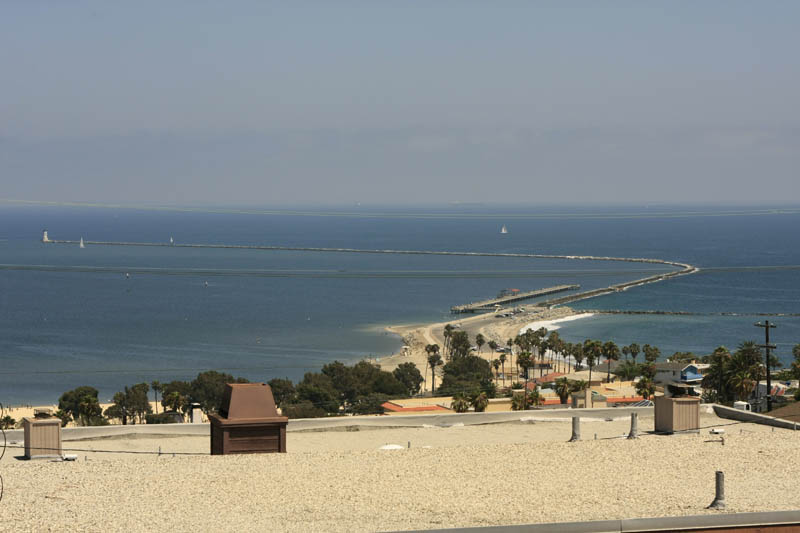The battle determining whether or not the city should modify the breakwater continues between the city of Long Beach and its residents.
A study session was called July 27 to research the economic effects of removing the Long Beach breakwater and whether the federal government would have any interest in altering or removing parts of it.
Activists have fought for more than a decade to have something done about the structure, according to the Long Beach Post. A study done by a local engineering firm, Moffatt and Nichol, figured out how to modify the breakwater, which would create the opportunity of re-introducing waves in Long Beach and earn the city up to $52 million annually in tourism revenue.
The firm found multiple alternatives in which the breakwater can be modified to improve water quality and re-introduce waves to the Long Beach coast. They also found a number of potential solutions to improve the ecosystem.
Moffatt and Nichol does not recommend completely removing the breakwater due to the possibility of many negative impacts that cannot be effectively mitigated in a cost-effective approach. However, the cost to modify the breakwater will not be cheap. The study determines it will cost anywhere from $10 million to $310 million in construction alone.
In addition, the study predicts increasing wave heights to four times the current size on the Long Beach shoreline. They also predict that removing breakwater sections will result in creating up to 500 acres of kelp bed and 300 acres of rocky reef habitat.
Marine Bureau Manager Mark Sandoval said that we will probably not see any modifications to the breakwater anytime soon due to cost.
“The first step was only a small investment,” Sandoval said. “The next steps would be much more expensive.”
Sandoval said the next study would cost about $3.5 million and that it would take a long time to get the money to support the study.
“It would cost hundreds of millions of dollars to actually see something happen,” Sandoval said. Sandoval went on to explain that coming up with that much money takes time, which is why any modifications made to the breakwater would take place in the distant future.
“The reason the city committed to this study is to get something moving,” Sandoval said about the study done by Moffatt and Nichol.
As for seeing waves on the Long Beach shoreline, Sandoval has some fundamental disagreements with the surf riders and the economic value of surf.
“There is value to our beaches without surf,” Sandoval said.
He explained that the beaches in Long Beach are used for other recreational purposes, such as kite surfing. A beach without surf is also a safe place to bring small children who are being introduced to water or the ocean for the first time.
In addition, the breakwater is moving trash from the river onto the beaches. Sandoval agrees that the water in Long Beach isn’t as clean as it could be because of the breakwater, which exacerbates the problem.
It is also considered by some to be a good thing that the breakwater is moving trash onto the beaches where it can be picked up as opposed to being stuck in the rocks or floating around in the water.
When it comes to modifying the breakwater, Sandoval believes that they should either keep it the same height or minimize it all the way down to the ocean floor.
“It’s a terrible idea to modify the breakwater to under the surface level,” Sandoval said.
This is because boats can run aground due to not being able to see the breakwater. Modifying the breakwater to just below the surface would cause a lot of problems in the Long Beach Harbor for boats and there would be more boating accidents with them running into the breakwater.
According to the Long Beach Post, the study does not state whether or not there is federal interest in modifying the breakwater, as only the Army Corps can perform the function.
In addition, according to an article in the Los Angeles Times, Los Angeles County inhabits the most polluted beach water. The article also said that Heal the Bay, a nonprofit environmental organization dedicated to making Southern California coastal waters more safe, healthy and clean, ranked the beaches of Los Angeles County as the worst in the state for water quality.
However, if the city’s goal is hard bottom habitat ecosystem restoration and even though importing rock to create the kelp beds is more cost effective, it will not improve the city’s goal of renewing the water quality, the city’s beaches or increase wave activity, according to The Long Beach Post.




